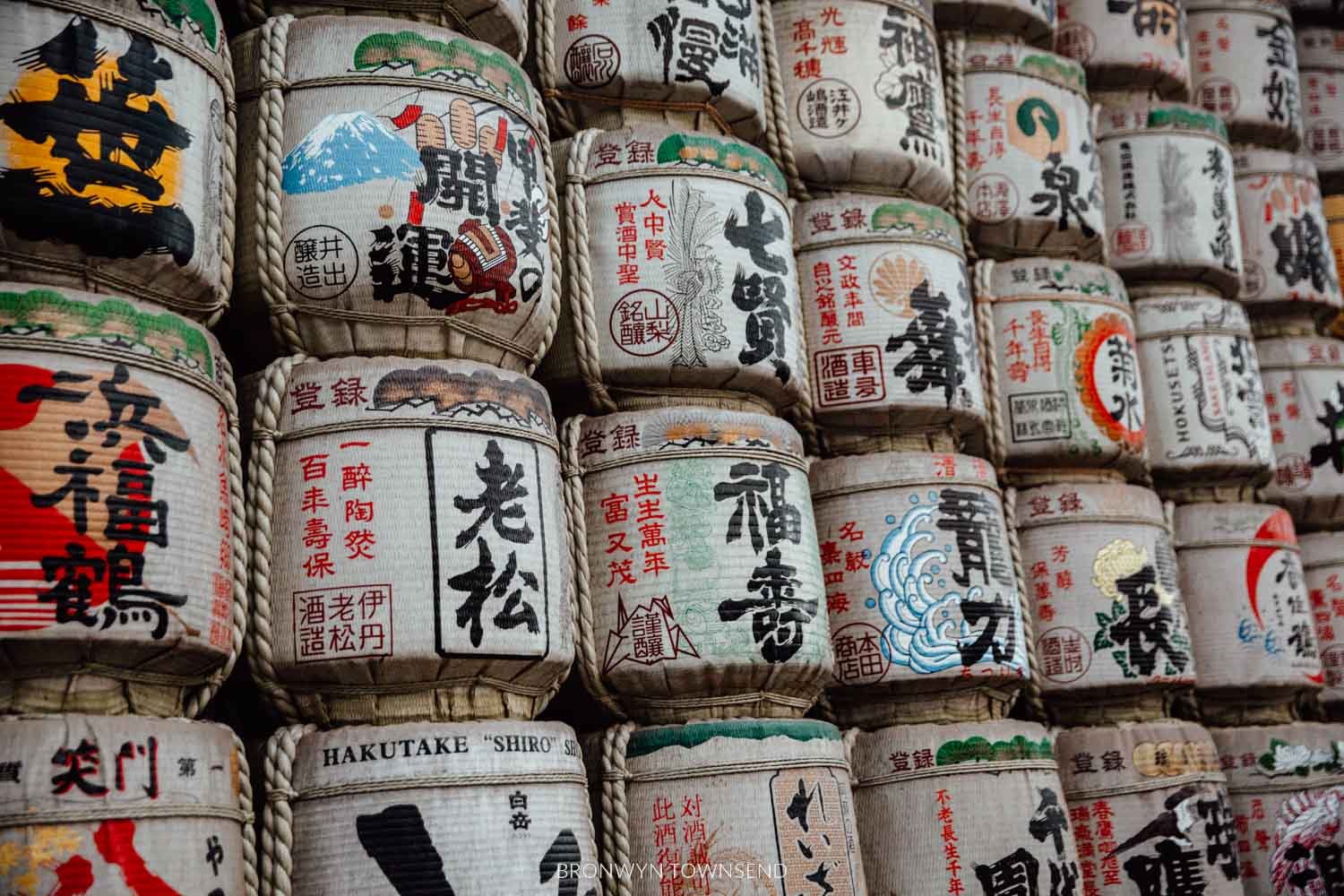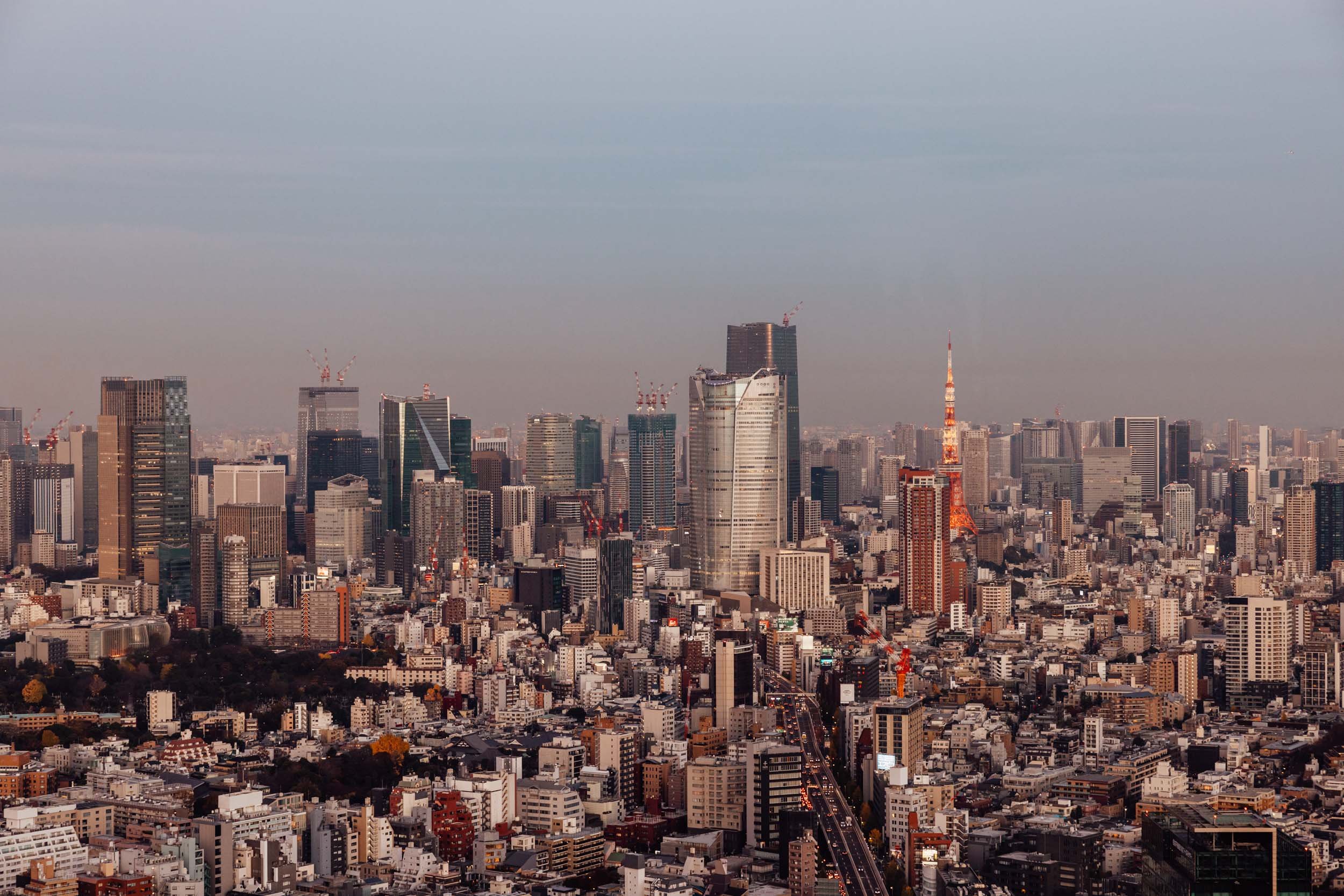The ultimate Japan winter packing list
If you’re wondering what to pack and wear in Japan in winter, you’re in the right place. This guide covers packing lists for key regions including Tokyo, Kyoto, Osaka, Hokkaido, and the Japanese Alps. Take the stress out of knowing what you need in Japan with this ultimate winter packing list.
Weather in Japan in winter
Winter in Japan can look dramatically different depending on where you are visiting. Hokkaido is a popular destination with ski resorts in Niseko and Furano welcoming skiers and snowboarders looking to make the most of the J-Pow. Sapporo is the capital of Hokkaido and will likely be your launchpad while on Japan’s northernmost island. It also receives some of the highest snowfall of any city each year - more than 5 metres on average!
The Japanese Alps and northern Honshu are also great choices in winter, especially for those in search of snowy landscapes. Destinations such as Nagano and nearby ski resorts including Hakuba and Nozawa Onsen dip into the minus temperatures but don’t typically see the same lows as Hokkaido.
In central Honshu, Tokyo, Kyoto, Osaka, and the surrounding regions experience milder winters with more clear days, less rain, and infrequent snowfall - think just one or two days each winter. Daytime temperatures are usually comfortable with a few layers and a good coat or jacket, but thermals aren’t usually required.
Overall, you can expect a mix of clear and snowy days throughout Hokkaido and the Japanese Alps in winter, while destinations in eastern/central Honshu including Tokyo and the Kansai region have many clear days with less rainfall, temperatures typically with highs ranging around 8-12 degrees celsius and lows of around 0-4 degrees celsius.
Seasons In Japan
Japan experiences four distinct seasons, with spring, summer, autumn, and winter all varying across the country's geography, as Japan has climates from subarctic in Hokkaido to subtropical in Okinawa.
Winter in Japan | December, January, and February make up winter and are a popular time for visitors who head to the ski fields for some Ja-Pow! Hokkaido and the Japanese Alps tend to be some of the most visited snowy destinations, but there are also lots of great lesser-visited destinations in northern regions including Aomori and Akita. In central Honshu places like Tokyo, Kyoto, and Osaka will be cold but infrequently experience snowfall. Temperatures can dip and layering is advised.
Spring in Japan | March, April, and May are the months of Spring and are the busiest time for international and domestic tourism, mostly driven by sakura (cherry blossom) season and Golden Week. The beginning of spring is typically cooler, while by May the days are warm and humidity levels begin to increase.
Summer in Japan | June, July, and August are the hottest and wettest months of the year throughout most of Japan, especially further south. However, if you are travelling in summer you may prefer to visit the more comfortable climates in Hokkaido or mountainous regions where the weather is cooler and experiences lower humidity compared to cities.
Autumn in Japan | September, October, and November make up the fall months and it’s a popular time for travellers to visit. Favourable weather, less rain, and lower humidity combined with stunning autumn foliage make it a popular time to visit - November in Kyoto is especially popular.
What to wear in Tokyo, Kyoto, Osaka, and Hiroshima in winter
Japan is known for being a shopping destination for many travellers, and who can blame them with all the unique and incredible souvenirs and omiyage to bring home? If I am travelling for a week or longer, I pack enough for one week for essential items like underwear and socks, and keep other items to a minimum.
Choosing a colour palette or options that mix and match well will give you so many more outfit choices and combinations, without taking up too much space. Think capsule wardrobe for your trip! Tokyo and further south typically enjoy milder winter weather with brisk days and plenty of sunshine. Choose items that can easily be layered or paired back to suit a range of temperatures from lows of around 0 degrees celsius to highs that can reach low-mid teens.
2 x pair of jeans, at least one dark and one light wash if possible
1 x skirt - choose a style that you can easily mix and match with various tops
1 x dress for occasions that require smarter attire - try to choose one that can be layered with knitwear
3 x sweaters or knitwear
1-2 x lightweight thermal undershirts (Uniqlo Heattech is great) or long sleeve tops
8 x pair of underwear
2 x bras
8 pairs of socks - make sure they don’t have holes and they match, if you’re visiting temples and ryokans you will be taking your shoes off a lot
1 x puffer or insulated jacket
1 x scarf for layering, winter winds can be cold!
1 x pair of sneakers
1 x pair of boots
Optional
1 x pair of gloves - just in case, because we did use these in Tokyo once or twice
1 beanie - perfect for colder days
What to pack for Hokkaido, the Japanese Alps and Northern Honshu for winter
Hokkaido in winter can get very cold. We experienced lows of minus 16 degrees celsius in Furano and minus 9 in Sapporo during January, so thermals were a must! In this climate, you are going to want to layer without overpacking. Most hotels also have a coin laundry, so you can wash as you need - that’s exactly how we packed just one suitcase for a month winter trip in Japan.
We also experienced a lot of snow in Nagano, Togakushi, and Shirakawa-go, though the temperatures hovered around -1 to 2 degrees, so we didn’t need quite so many layers or thermals - which is why packing for effective layering is key for winter travel in Japan.
Essentials and base layers
8 x underwear
2-3 x bras
8 x thermal socks
3 x thermal undershirts - I have Uniqlo Heattech tops of varying thickness which gives me options depending on the temperature
2 x thermal leggings - I have worn both Uniqlo Heattech and Oysho thermal leggings, I personally prefer the tighter fit of the Oysho leggings so they create a snug base
Mid layers and outerwear
2 x jeans - I recommend a light and dark wash pair if you have them to give more variety to your outfits
3 x knitwear or sweaters - wool and cashmere are better options for keeping you warm
1 x insulated jacket or coat - even better if it’s waterproof to keep you dry in the snow
Accessories
1-2 x beanies
1 x scarf
1 x gloves
1 x pair of waterproof, slip-resistant boots - snow boots are a great option, but I love the versatility of my Timberlands as well
1 x crampons - if you plan on doing any hiking or even walking in icy areas, these will be a lifesaver and make getting around on foot much easier. If you can’t pick them up before you arrive, they can be purchased from outdoor shops or discount stores like Don Quijote.
Heat packs - if you need a warm boost, heat packs that can be placed inside your gloves or between layers can take the edge off the cold. These can be purchased in convenience stores throughout Japan in winter.
Other general packing items
Moisturiser and lip balm - the dry winter weather can take a toll on your skin
Small first aid kit - include basic items such as paracetamol/ibuprofen, antiseptic cream, band-aids, cold and flu medication etc. as it may be difficult to easily identify these items compared to your home country
Chargers and international adapters if required - you may need to consider different voltage requirements depending on where you are coming from as well
A portable charger to keep your phone and other electronics topped up on-the-go
Camera and lenses
Spare batteries and memory cards
Umbrella - but you can also pick these up easily at convenience stores for around 700 yen
Passport and any required visas if applicable
Luggage forwarding
Luggage forwarding is one of the best inventions for travellers in Japan. You can easily send your luggage between your hotels so you don’t have to carry it as you move between each of your destinations. This is particularly useful if you have large suitcases.
We used the Yamato luggage forwarding service during our most recent one-month winter trip to Japan and it was a lifesaver. We knew we wouldn’t want to drag suitcases through a foot of snow from the train station to our hotel, so we arranged for it to be sent. It’s super easy and relatively cost-effective - I was more than happy to pay for the convenience on this occasion! I’ll write a guide soon on everything you need to know about luggage forwarding in Japan.
More useful Japan travel guides
Make sure you’re prepared with this list of essential things to know before visiting Japan
Get an idea of what to budget for 2 weeks in Japan
Seasonal packing guides | What to pack for Autumn in Japan
Travel planning | Where to stay in Hiroshima / Is it better to stay in Hiroshima or Miyajima? / Is Kawaguchiko worth visiting? / Guide to visiting Japan’s snow monkeys





















